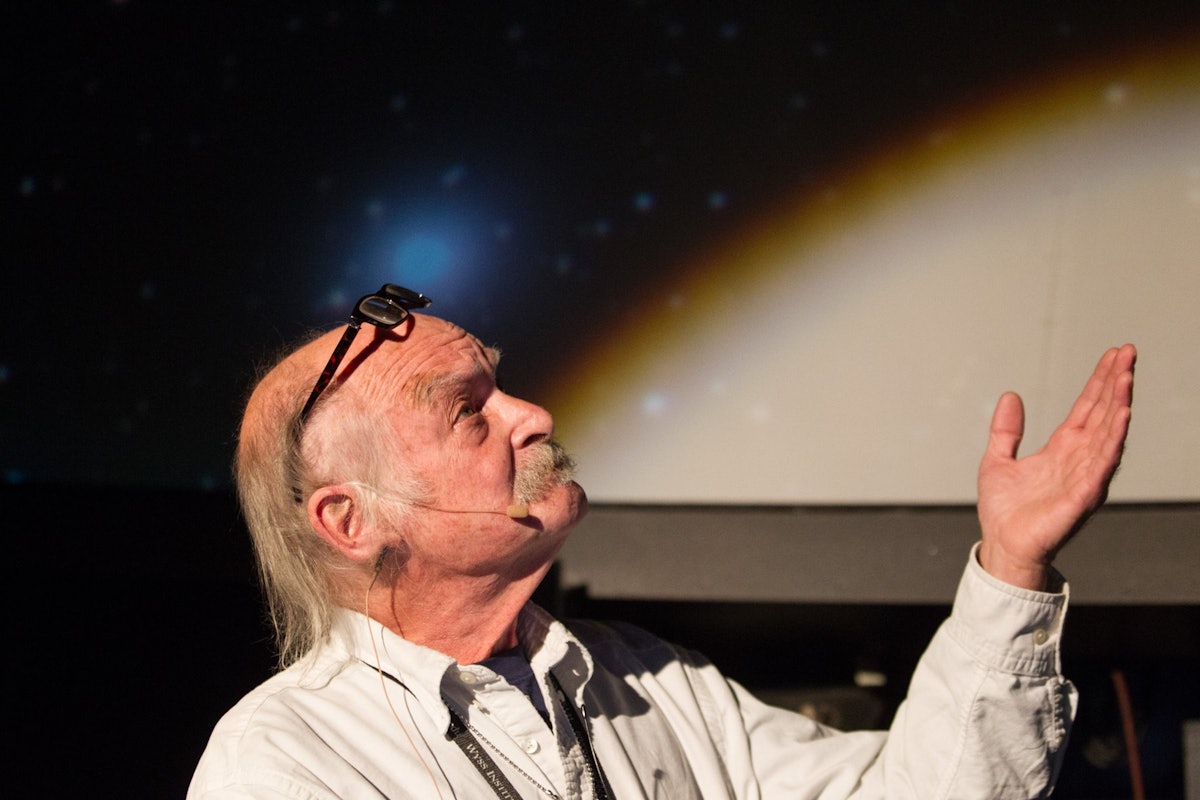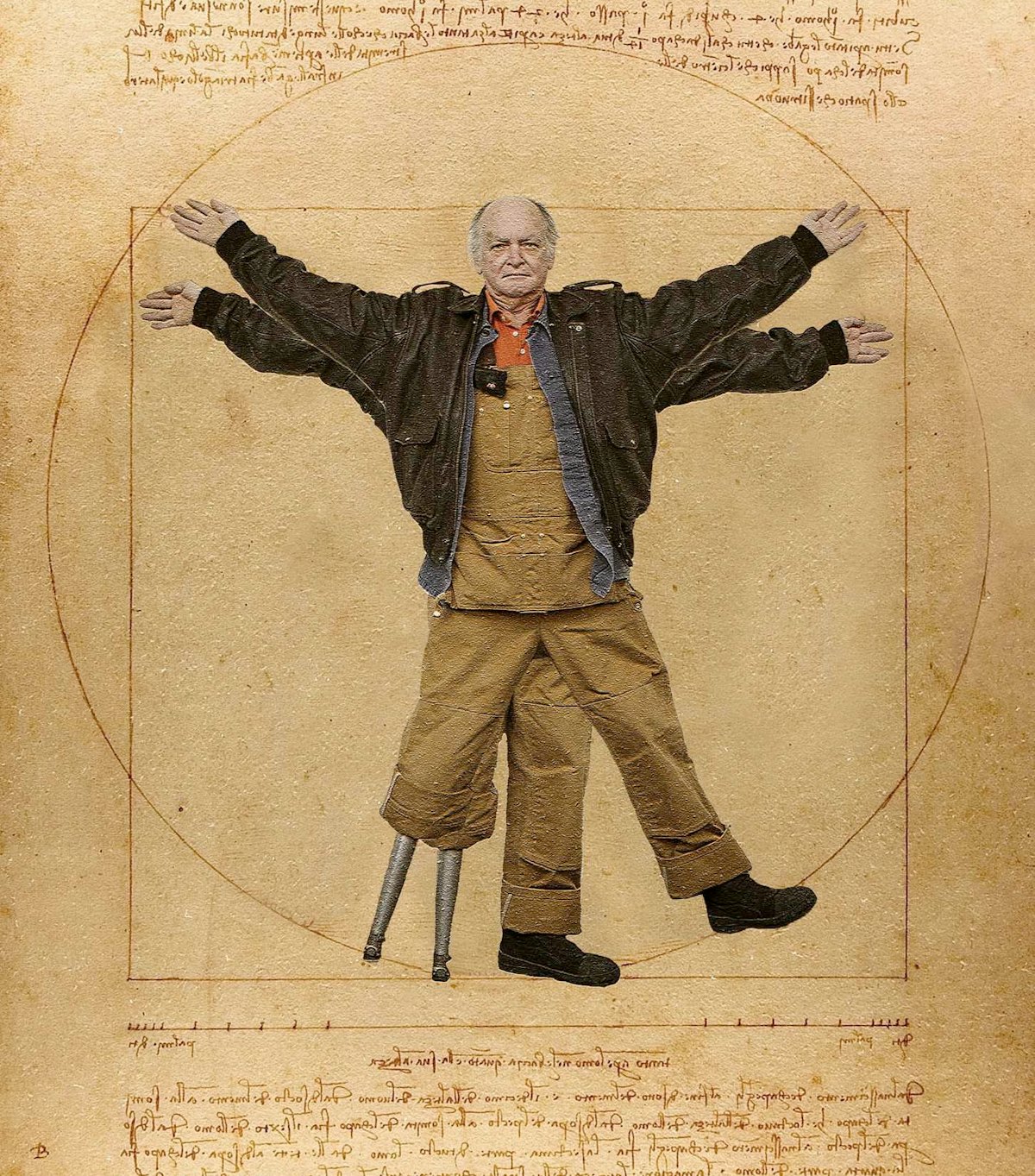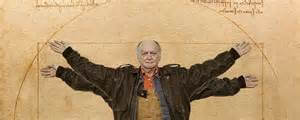For about a decade, Joe Davis has been trying to send a message into space. This message is not intended for potential intelligent alien listeners, though. He’s already sent two signals into the void for them. He hopes that this communiqué will reach humans. On Earth. Ideally around 1935.
The dispatch, which Davis calls Swansong, is at its simplest a one-hour Morse code transmission listing numerous pandemics, natural disasters, genocides, and other tragedies that humans failed to mitigate or prevent between 1935 and 2011. The idea is to send it towards Cygnus X-1, a black hole over 6,000 light years from Earth, in order to slingshot the signal off of its time-distorting edge, into the past, and back towards us. If the gambit works, the Swansong project could, as Davis put it in his notes for a 2017 presentation on the idea, “be used to break the wheel of time.”
It’s easy to brush Swansong off as an outlandish idea, especially when you know that Davis is not a trained scientist. He earned a BA in creative arts in 1973 from the now-defunct Mount Angel College in Oregon, then moved back to Mississippi, where he’d grown up, and started working blue collar jobs, usually with machines. (He reportedly used his art and machine skills to design his own prosthetic after losing a leg.) In recent decades, he’s struggled to make ends meet as an artist, taking dish washing gigs to help cover basic expenses — and occasionally failing to do so, facing eviction, and sleeping on friends’ couches or in his truck for days or weeks on end.
But Davis’s lack of credentials and material success do not reflect his intellectual capabilities. As an undergrad in the early 70’s, he reportedly got permission from notorious innovation hub Bell Laboratories to use their laser rigs to carve acrylic, glass, and plastic, publishing his techniques in an academic journal. Then, while working as a laborer, he drew up designs for an electron gun that NASA agreed to launch on its space shuttle to conduct an experiment that could have theoretically produced artificial northern lights. (Despite the agreement, the project, dubbed Ruby Falls, never got off the ground due to a NASA budget shortfall.) And in 1982, he talked his way into a meeting with the head of MIT’s Center for Advanced Visual Studies, outlined his Ruby Falls plan and several other ideas, and walked out a research fellow. He’s been affiliated with MIT ever since.

There — and at Harvard, the Rhode Island School of Design, the University of Toronto, and beyond — Davis has worked as a scientific artist with numerous researchers. Not as an illustrator helping them visualize their projects like most people with this title, but as an idea generator dreaming up, and an equal collaborator working to execute, fantastical concepts. In recent years, he’s worked on genetically engineering silkworms that can spin gold threads, encoding Wikipedia articles into the DNA of ancient apple species, and finding ways of recording the sounds microorganisms make in the hopes of translating them into orchestral pieces. Ali Yetisen, a chemical engineer at Imperial College London who has worked with Davis, calls him “the founder of the field of bioart,” which blends scientific and artistic methods to push the boundaries of both disciplines.
Davis’s projects often feel like scattershot exercises in erratically “satiating overwhelming curiosity about everything around” him
“Some of his work is meant to stimulate creativity in scientists,” Yetisen explains, inspiring them to think about subjects in new ways, forcing them to develop tools and techniques that they can put to different uses later. “You can build a research proposal around them, launch a program.” Some of his work is meant to inspire popular interest in, and foster understanding of, otherwise abstract, dense, or opaque scientific subjects. Some of it is meant to critique or probe the ways scientists operate, or humans think about ourselves and the world around us. Often, Yetisen says, his works are meant to do all of these things at the same time, depending on your point of view.
From the outside, Davis’s projects often feel like scattershot exercises in erratically “satiating overwhelming curiosity about everything around” him, as he once described his drive. But in conversation, it becomes clear that a common thread unites many of them: A deep interest in fathoming the totality of human existence, and in figuring out how to encapsulate and preserve or transmit that understanding. This act of self-recognition and -comprehension, Davis tells Mic, “is something that human beings have never been able to achieve,” despite centuries of effort.
This is why Davis has always been fascinated — and frustrated — by the search for extraterrestrial life (SETI). In order to introduce ourselves to other life forms, we have to figure out who we’re introducing — to acknowledge the core of what humans are as a species and how we relate to the world. In fact, Davis posits, because we have no idea what other life is like and thus how to communicate with it, and because the chances of any single message shot into space reaching intelligent life are so slim, SETI messages are primarily an act of self-reflection and -definition. Yet, he notes, SETI messages to potential alien listeners always try to present humans as entirely friendly and rational beings, eliding all the darker, more violent parts of our history. This selective blindness is, to Davis, a betrayal of the core purpose and promise of SETI research — not to mention an affront to one of his core personal drives.

So naturally, he’s been poking at and riffing on SETI projects for decades. Notably, in 1986, he briefly took over MIT’s Millstone radar dish to beam the vaginal contractions of a troupe of local ballerinas into space to protest NASA’s decision to censor female genital anatomy in SETI missives. (The US Air Force, which uses that radar installation, intervened and cut the transmission after 20 minutes.) More recently, in 2009 he sent a message from the Arecibo Observatory to three star systems that may contain habitable planets, encoded with the DNA sequence of the most common protein on Earth, which he argued would ultimately tell aliens more about life on the planet than any image of man. To hammer his points home, he also sent a text and audio message that runs: I am the riddle of life — know yourself.
In late 2009, a science writer who read a couple of blog posts Davis wrote about his Arecibo venture sent him a suggestion: Why not try using a rapidly-spinning black hole — a Kerr object — to send a message about humans to humans in the past? “That,” Davis says, “really intrigued me.”
So, he located an apparent Kerr object in the Cygnus constellation and worked out that he could send a Morse code radio signal to it with sufficiently powerful equipment. Realizing the earliest time humans would be able to receive a radar message was 1935, he built the project around that timeline. The message opens with an SOS, introducing Davis and explaining that he’s communicating via “rapidly rotating object in Cygnus” as a relay, from the future. Then, it bluntly details the dates of and deaths caused by the Holocaust, the HIV/AIDS pandemic, the Tōhoku earthquake and subsequent Fukushima Daiichi nuclear disaster, and dozens of other tragedies.
According to Nikk Effingham, a University of Birmingham meta-physicist who researches time travel, physicists have been exploring the idea of using a Kerr object to send data through time for decades. (Breaking down the mechanics behind this idea would require its own article.) But none of the papers on the topic say that this idea will definitely work given what we know about the laws of the universe — just that, “for all we know, the laws of physics might be like this, and we might be able to do this.” Effingham points out that, even if Kerr objects really are functional time machines, the chances of a signal hitting one just right are slim to begin with, and even if a signal did bounce back to us it would likely be too weak to read.
Davis acknowledges all of this. What’s more, he acknowledges that unusual projects like this always face serious logistical headwinds. He usually operates on shoestring budgets, and so depends on cheap or free time and resources. He also argues that research institutions, fearful of being labeled frivolous or ridiculous and so losing their funding, shy away from association with ‘weird’ projects like this one. Which is why, he believes,when he broached the idea of Swansong to Arecibo in 2010, they rejected him. He’s been unable to book space or find willing collaborators at any other suitable transmitting facilities — even though no one’s told him the idea is wholly pointless.

“I’m determined the message will eventually be transmitted,” Davis insists. He plans to make another pass at asking for time at observatories at some point in the future, although he’s not sure when. And just in case that doesn’t work, a few years back he also sent the coded message to astronomers around the world. He told them that he’d formatted it so that they could send it in the one-hour windows when they do diagnostic tests on their equipment. They could strip his name out of the message and send it without telling him they’d done so, he added. No one would ever need to know. Perhaps someone took the bait. But if they have, they haven’t told Davis.
However, Davis personally suspects that, “if such a message was received, it probably wouldn’t be believed,” because of humanity’s tendency to ignore uncomfortable truths as absurd or ill-informed until it’s too late. “It’s kind of like the response to the pandemic, you know?”
But Davis rarely intends for his projects to succeed. The meaning is in the endeavor, not the result. The end of Swansong, a brief philosophical statement capping off the long and dry list of tragedies makes it clear that in the same way SETI messages are really for us as well as aliens, this message for the past — its gesture and contents — is really a message for us today as well. It’s another of Davis’s attempts to force us to confront what it means to be human.
It reads: “We acknowledge that like the universe around us, we are of both violent and peaceful nature. It is from precisely this recognition that we derive our humanity. It does little good to apologize for past atrocities. Instead, we are driven to evolve into more conscientious beings capable of the promise and aspirations that also underlie the history of our experience.”
“Would that we could change the past.”
Please remember we all have different opinions, Think Before You Speak or Write Something that is cruel to Others. After all, We are only Humans.Wishing you clear skies and wide eyes.To share your experiences or just leave a comment there is a area below. Read or listen. We are the change the world has been waiting for! Have you witnessed an unidentified flying object? You are not alone. Whether you think UFOs are black projects, extraterrestrial craft, something else altogether, or just don’t know, again: you are not alone! Unconditional love. The road we all get to walk. Unconditional love is like the sun. WE ARE THE DISCLOSURE !!! ~~~ WE HAVE NEVER BEEN ALONE!!! LOL=Love and Regards, Happy Quarantine ! Thank You, Nancy Thames : )

